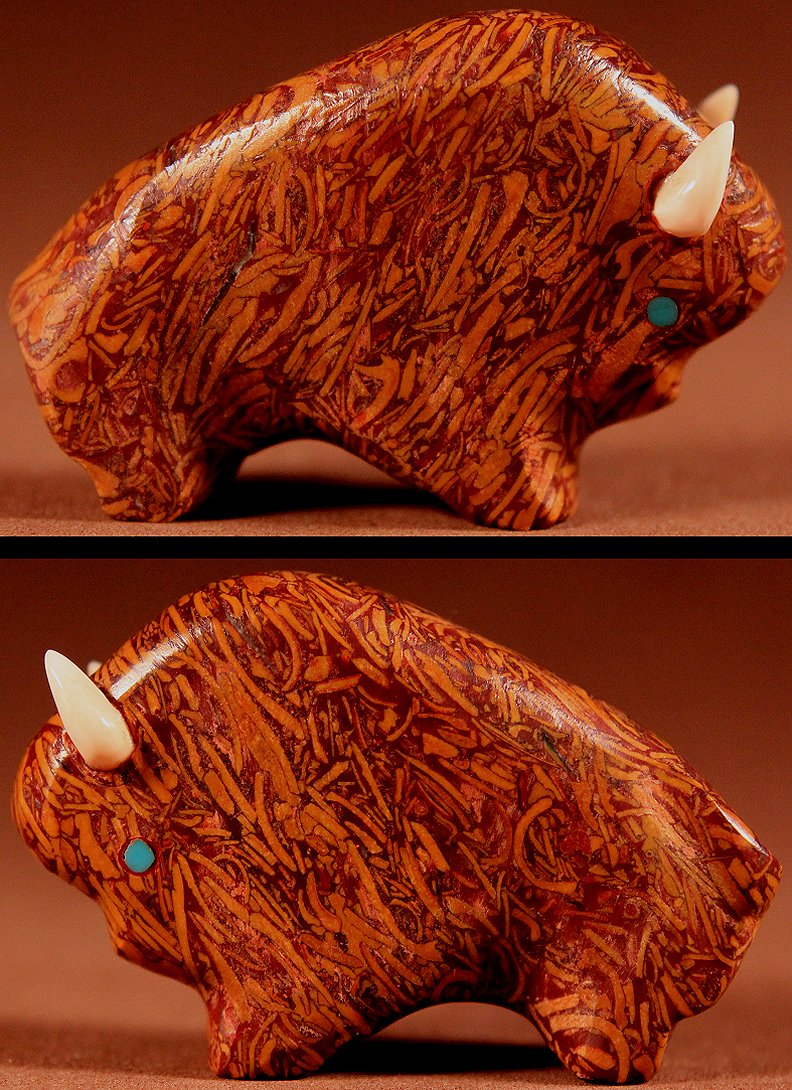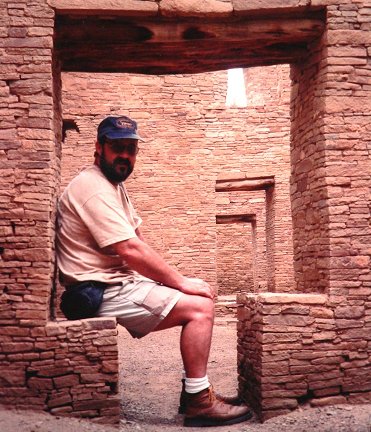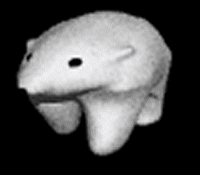One of the things that drew me to Zuni fetishes was my childhood attraction to rocks and fossils. Some childhood interests never go away and my association with the artists of Zuni Pueblo has only deepened my appreciation for the natural wonders of this world.
As a Zuni fetish trader, we've been duped more than once by the so called claims of stone origins, after all, unless you dig the stone yourself from the ground, you're vulnerable to whatever story the seller spins to make the stone (and the subsequent carving) more "rare". Darlene and I tried, early on, to verify the veracity of those stories that seemed suspect .. like the origins of Rainbow Calsilica (is it real or man made?), Black Honduran Opal (the story we got was it was made from heat treated sheep manure!) The truth, in many cases was elusive but we tried!
For years we perpetuated the myth about "Vietnamese Jasper". And only last week, I was able to finally learn the truth behind this earthy, caramel colored stone seemingly filled with small shell fish fossils. Here's what I learned:
There seems to be an awful lot of names for this stone. Mariam stone, Mariam jasper, Mariyam jasper, Elephant skin jasper, India script stone, Arabic script stone, and Coquina jasper are but a few. Coquina jasper is a better desription of the stone and is a more accurate term! Coquina is the Spanish word for cockleshells or shellfish. This jasper is full of coquina fossilized clams. and the patterns in the rock are of fossilized coquinashells. In the magazine Lapidary Journal (Jan/Feb 2012) it is called Coquina jasper. According to the article, it is not a jasper, it is limestone with neat fossils embedded in it. Quote: With a hardness of 3, limestone is much softer than jasper… coquina is more like a marble than a jasper in that it is a sedimentary rock that has been transformed under pressure to something harder and more durable, but not as hard or durable as quartz. Unquote. Many rock cutters have stated that the stone fractures along the shell lines when slicing it for jewelry applications. Most So there you have it. The one thing that is certain and for sure is it is NOT Vietnamese jasper, and I personally must apologize for sustaining and perpetuating this falsehood
 |
| Lynn Quma Cochina Jasper The stone formerly known as "Vietnamese Jasper" |
I'm updating Zunispirits.com tonight at 7 PM. Fifteen new and wonderful Zuni fetish carvings (some really special ones!) will be added to the site this evening. I hope you'll stop by and check them out.
















No comments:
Post a Comment